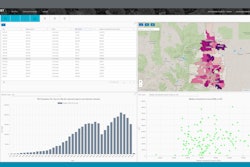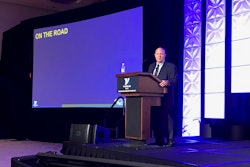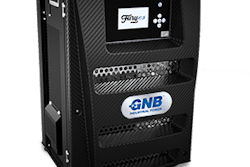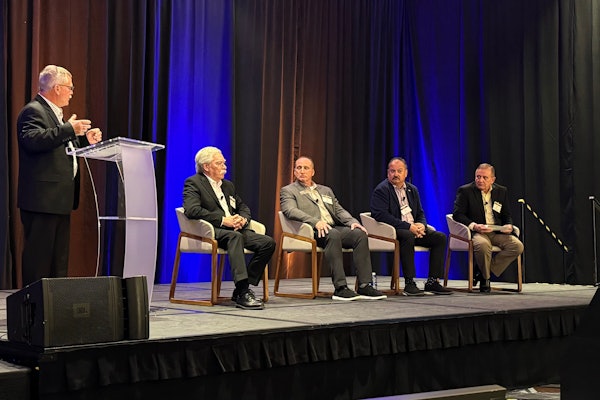The following comes from the October 2018 issue of Truck Parts & Service. To read a digital version of the magazine, please click the image below.

If you ask aftermarket heavy-duty truck parts distributors and service providers how they handle their operations when they get really busy, many likely will tell you they’re always really busy.
However, despite being busy all the time, these companies have rush periods — whether they come at certain times of day, week or year — when it seems like they have more business than they can handle. Several industry veterans share some strategies they use to beat the rush while ensuring that customer service doesn’t suffer.
Cross-training employees
Total Truck Parts’ business, which is primarily fleets, is seasonal because of the amount of farming in its market, and its peak months are in the first and second quarter when crops are harvested, says President Marc Karon. The company has prepared itself for rush periods by train-ing its staff to be able to work in various departments.
“We do a lot of cross-training to permit warehouse people and drivers to come to the front counter if the activity is too high for the current staffing to handle,” Karon says. “Our biggest challenge comes around the lunch period. Many of the drivers are out deliver-ing and others are at lunch, but there are always people here to help.”
To best meet the demands of its clientele, Total Truck Parts has determined the best time to be open is 7:30 a.m. to 5 p.m., and a half day on Saturday in locations where it’s warranted. Karon says the company opted for the cross-training strategy versus extending store hours during the busy season because the latter would be detrimental to employees and the company.
“We believe that having longer hours stresses the workforce and job satisfaction is important, especially in this tough employment economy. Increasing hours will require increasing staff and it is doubtful the generative profit will pay for the increased expenses,” he says.
Ron Middleton, president at Middleton and Meads, says his company doesn’t have many rush periods because the work is almost always steady from mid-March until the end of December. That said, the company does encounter times when business is hopping more than usual, but it’s prepared.
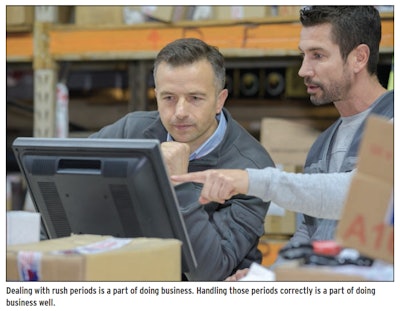
“There’s a fine line of having too much help and not enough help. We try to have the right amount of help so we’re making money when we’re steady and not losing money when we’re not,” Middleton says. “We try to walk that line.”
Truck Supply Co. of South Carolina is another business that doesn’t have rush periods, says President Edward Neeley, because its staff is always busy — or as he puts it, “Our phones are ringin’ and our doors are swingin.’” He attributes the unceasing business to the nearly 40 months of continuous growth the company has been experiencing.
For Truck Supply Co. of South Carolina, the rush takes the form of when large orders arrive, which then have to be unloaded, processed, stocked, then pulled and shipped out to customers.
“We don’t know when the [supplier] trucks are going to arrive, so sometimes the receiving area gets slammed and we’ll have to send guys from shipping back there to help them get product in,” Neeley says.
When the company receives large orders from customers, those orders must be processed and the parts need to be pulled and ready for shipping, Neeley says.
“Our pickers get slammed, so you have to bring some people back from the counter, or wherever, to help. Our philosophy is: ‘Give the customers what they want when they want it, not when we want them to have it,’” he says.
Neeley says he’s moving staff around every day, adding that if he moves one person to a different department, “then I have to replace him with somebody and
Staffing up
For Owner Vince Mathews and Capitol Clutch & Brake, the time of day and season are huge factors in determining peak customer business because of its location. He says the West Sacramento, Calif.-based company is almost always busier before noon versus the rest of the day; and March, April and May are “pretty brisk” compared with late November through February.
Mornings are busier, especially during the warmer weather.
“When it’s going to be 105 degrees in the Central Valley, nobody wants to be running for parts in that weather, so we notice a very distinct difference in the pace of business in the cooler morning hours versus the hot afternoon hours in the summertime here,” Mathews says.
To accommodate customers who want to beat the heat, avoid traffic or just get an early start to their day, Capitol Clutch & Brake opens before 6 a.m., even if the sign on the door says 6:30 a.m. “We’ve always had the belief that we open when we get here,” Mathews says.
Business picks up considerably when the weather improves in the spring because of the industries Capitol Clutch & Brake’s customers are in, such as construction, and they “start working in earnest again — and with that comes beating up their vehicles and needing parts to repair and maintain them,” Mathews says.
In meeting the demands of rush periods, Mathews holds the philosophy that it’s better to be overstaffed than understaffed. “When there is a rush period, we’re prepared,” he says. “Sure, the overhead might be significantly more, but we’re always ready. I don’t have to pull anybody from another department or schedule any extra people. Any time we’re open, we’re ready to go.”


